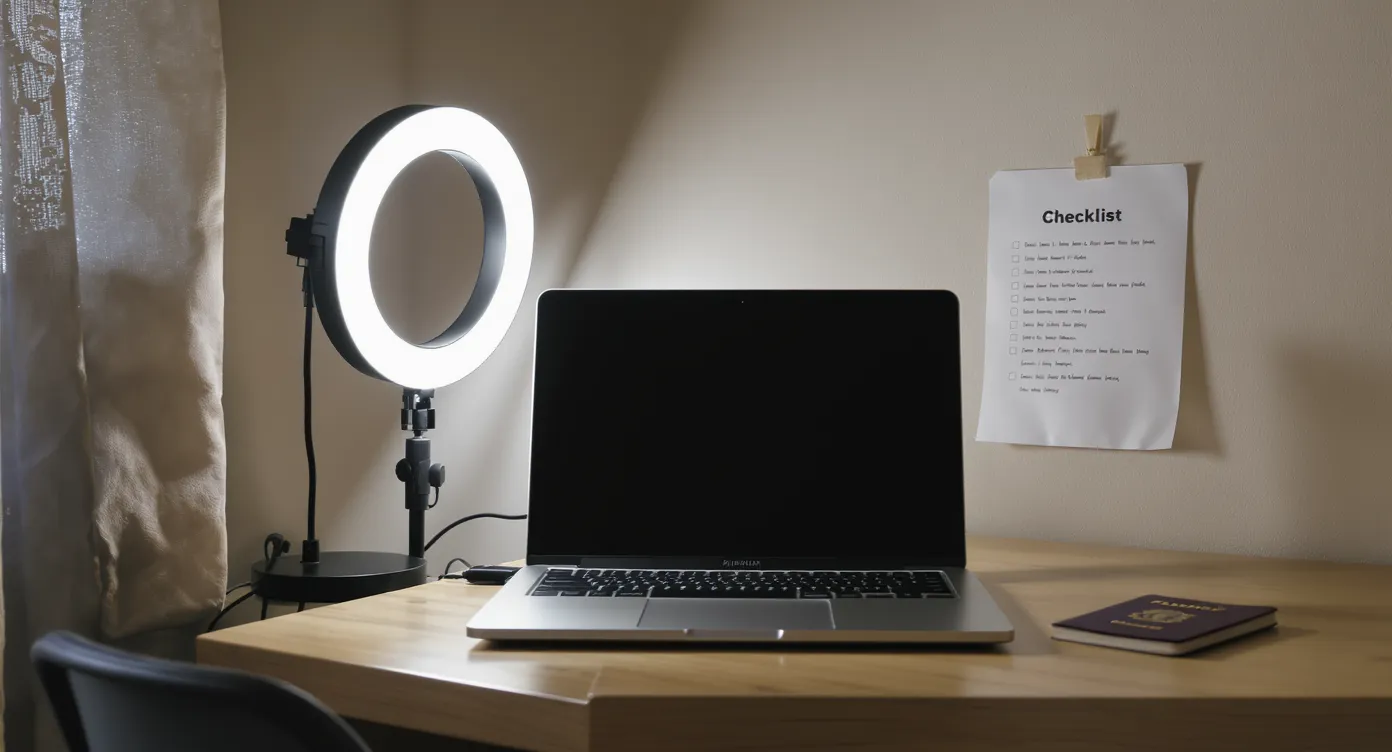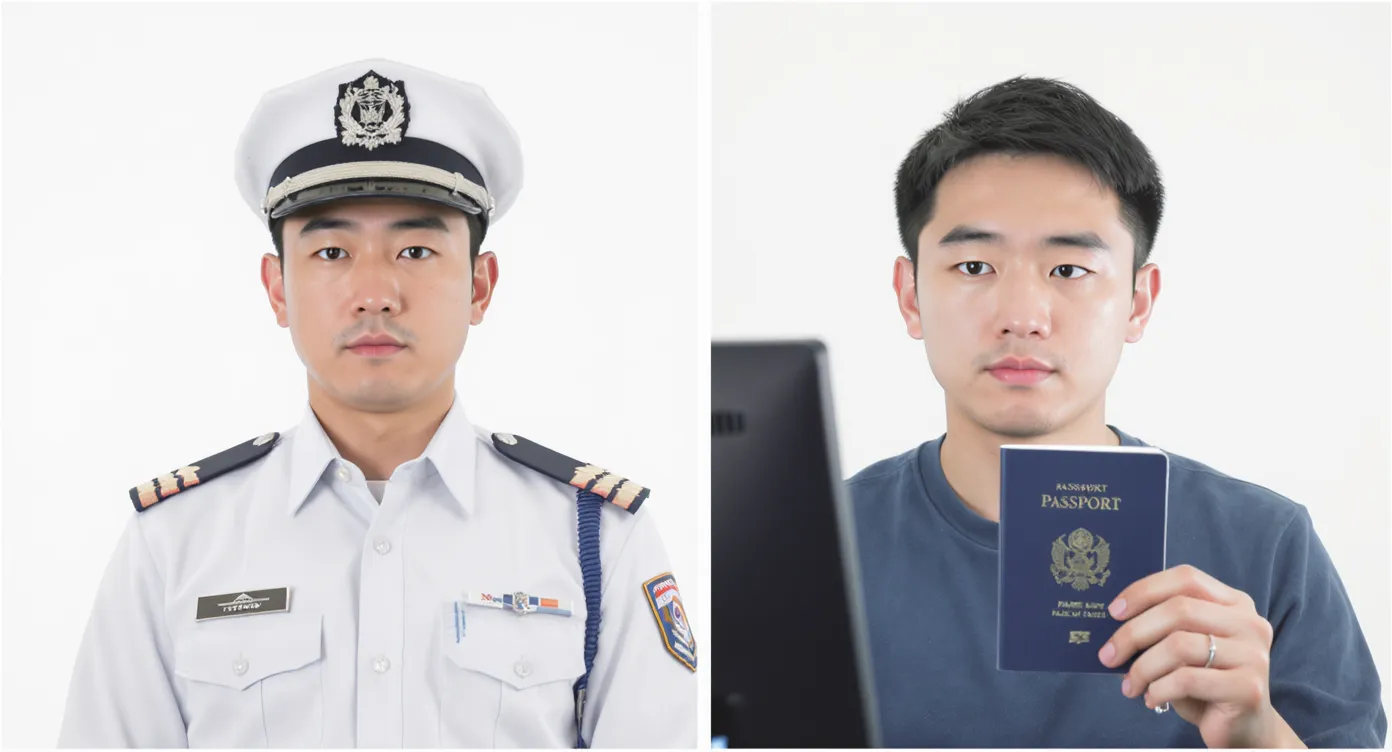Prefecture Video Interview Tips for Overseas Applicants

International applicants have long dreaded the phrase “Préfecture appointment.” Scarce time slots, costly flights to France, and last-minute cancellations can derail an entire immigration timeline. Since 2024, however, several préfectures have quietly rolled out secure video interviews for certain visa, residence-permit and naturalisation files. The option is still limited, but if you are invited to connect from abroad, the stakes are exactly the same as an in-person meeting—sometimes higher, because the officer sees only what the camera shows. Use the following field-tested checklist to make sure your remote appearance builds, not breaks, your dossier.
1. Understand the Legal Framework and Scope
-
Why is the prefecture doing this?
• Article R311-5-1 of the CESEDA, amended in 2023, authorises “entretiens par visioconférence” when the applicant resides outside France.
• A 4 January 2025 circular (INTK2301898J) instructs préfectures to prioritise family reunification, work-permit follow-ups, and talent-passport renewals for remote processing.
• Naturalisation services (SDANF) may also propose a video interview in phase 2 of the procedure. -
Who gets invited?
• Applicants who submitted paperwork via the ANEF portal and ticked “currently abroad”
• People in countries covered by France’s remote biometric collection pilot (see our guide: Remote Biometric Collection Pilot Projects)
• Those facing compelling circumstances—medical issues, travel bans, strike-related postponements—can also request a video slot. -
What are your rights?
• Same notice period: the prefecture must send an email convocation at least 15 days ahead (CESEDA R.311-5-2).
• Free interpreter if French level A2 is not yet certified (R.311-6).
• Ability to be assisted by a lawyer, who may join the call from another location.
2. Tech Setup: Eliminate Surprises Before They Happen
| Item | Minimum spec | Why it matters |
|---|---|---|
| Device | Laptop or desktop with 720p webcam (smartphones allowed only if fixed on stand) | Stable framing avoids shaky ID checks |
| Connection | 5 Mb/s up & down, wired or strong Wi-Fi | Prevents freezes that force adjournment |
| Audio | External USB mic or headset | Built-in laptop mics distort passport numbers |
| Lighting | Front light ≥ 500 lumens, neutral tone | Glare hides security features on documents |
| Backup | Mobile hotspot & second device ready | Officer may grant five-minute reconnection window |
Dry-run tip: log in one week early using the same FranceConnect identity you will present on interview day. This checks both your credentials and browser compatibility (Chrome or Edge latest version). Our step-by-step FranceConnect tutorial is here.

3. Privacy and Data Security Reminders
Remote interviews mean scanning passports and sometimes holding biometric documents up to the camera. Under GDPR you retain the right to confidentiality. To keep your personal data safe:
- Connect only from a private, password-protected network. Never use cafés or co-working Wi-Fi.
- Close all background apps that display notifications (email, messaging). Screen-sharing sometimes activates unintentionally.
- Record the session only if local law allows and you inform the officer—otherwise it may be deemed a privacy violation.
- Download the interview report (compte-rendu) immediately if the system lets you; links expire after 48 hours.
Our full security checklist appears in Data Privacy on the ANEF Portal.
4. Document Pack to Keep Within Arm’s Reach
- Primary identity: passport, birth certificate + sworn translation.
- Current French permit or visa label (if renewing).
- Civil-status proof for family files (marriage, PACS, children’s birth certificates).
- Financial evidence: last three payslips, work-contract copy, or business turnover statements.
- Address proof: recent utility bill or French host attestation + ID.
- Any originals previously scanned to ANEF—officers often ask to tilt pages under light to verify holograms.
Pro hint: Slip colour sticky tabs on edges so you can locate each paper in seconds while maintaining eye contact.
5. Master the Interview Flow
The typical 20- to 30-minute session follows a tight script:
- Identity verification (show passport, rotate photo page).
- Recap of your online application; officer may share screen with your ANEF file.
- Thematic questions—see examples below.
- Opportunity for you (or counsel) to add remarks.
- Recitation of next steps and electronic signature of the procès-verbal.
Common Question Themes
- Purpose of stay and long-term plans in France
- Employment details: company size, role, salary brackets
- French integration efforts: language courses, cultural activities (link to Free French Classes Offered by Mairies)
- Travel history and compliance with visas (Schengen 90/180 rule—see our guide Traveling Inside Schengen)
- Funding sources if self-employed or student
Prepare concise, evidence-backed answers. Officers appreciate applicants who cite document names (“As you see on my CERFA 15803 Attestation d’hébergement …”) rather than vague references.
Language & Interpreter Hacks
- If you need an interpreter, reply in short sentences and pause; the officer mutes while the interpreter speaks.
- The interpreter is neutral. Do not ask them to explain or advise; that is your lawyer’s role.
- If you speak French but stumble on legal terms, switch briefly to your native language—this is permitted.

6. Show Documents Like a Pro
- Hold the item 15–20 cm from the lens; fill 80 % of the frame.
- Tilt slowly to catch holograms; wait for verbal confirmation before removing.
- For multi-page contracts, flip pages while officer watches; do not stack them.
- If glare persists, turn off the ring light and use side lighting instead.
Officers may take screenshots; this is legal under the 2024 CNIL protocol as long as the image is attached to your secure ANEF vault.
7. After the Call: Immediate Action Items
- Check your ANEF dashboard for a “dossier mis à jour” notification within two hours.
- Download the attestation de dépôt or récépissé if issued—this document will let airlines board you or help secure a visa de retour later (see Residence Permit Renewal During Overseas Travel).
- If additional documents are requested, upload within the deadline (usually seven calendar days).
- Send a brief thank-you email through the ANEF messaging tab; it keeps the thread active and time-stamps compliance.
Frequently Asked Questions
Can I refuse a video interview and ask for an in-person appointment instead? Yes, but you must provide a legitimate reason (disability, tech unavailability). Expect a longer wait time.
What happens if my internet cuts out? Reconnect within five minutes. If impossible, the officer generally reschedules once. A second failure can lead to file closure.
Do I need to authenticate my documents again when I later enter France? No, unless the officer explicitly marks “to be re-verified on arrival” in your procès-verbal. Keep the PDF copy as proof.
Is recording the session allowed? Only with the officer’s consent and in jurisdictions that permit unilateral recording. France requires mutual consent.
Will a video interview speed up my decision? Préfectures claim a 20 % faster average, but real-world timelines vary by department and workload.
Ready to Secure Your French Status Without Flying Twice?
ImmiFrance has helped more than 600 overseas clients sail through their video interviews—from technical dry-runs to mock Q&A and real-time lawyer presence. Book a 30-minute strategy call today and let us:
- Audit your ANEF file for consistency and red flags
- Arrange a secure test session on the same platform used by the prefecture
- Provide bilingual interpreters and legal counsel on the day of your interview
- Track post-call requests until your approval letter lands in your inbox
Don’t let a frozen webcam or missing payslip derail your French dream.
Schedule your personalised prep session at ImmiFrance.com and move one step closer to that coveted carte de séjour or French passport.
